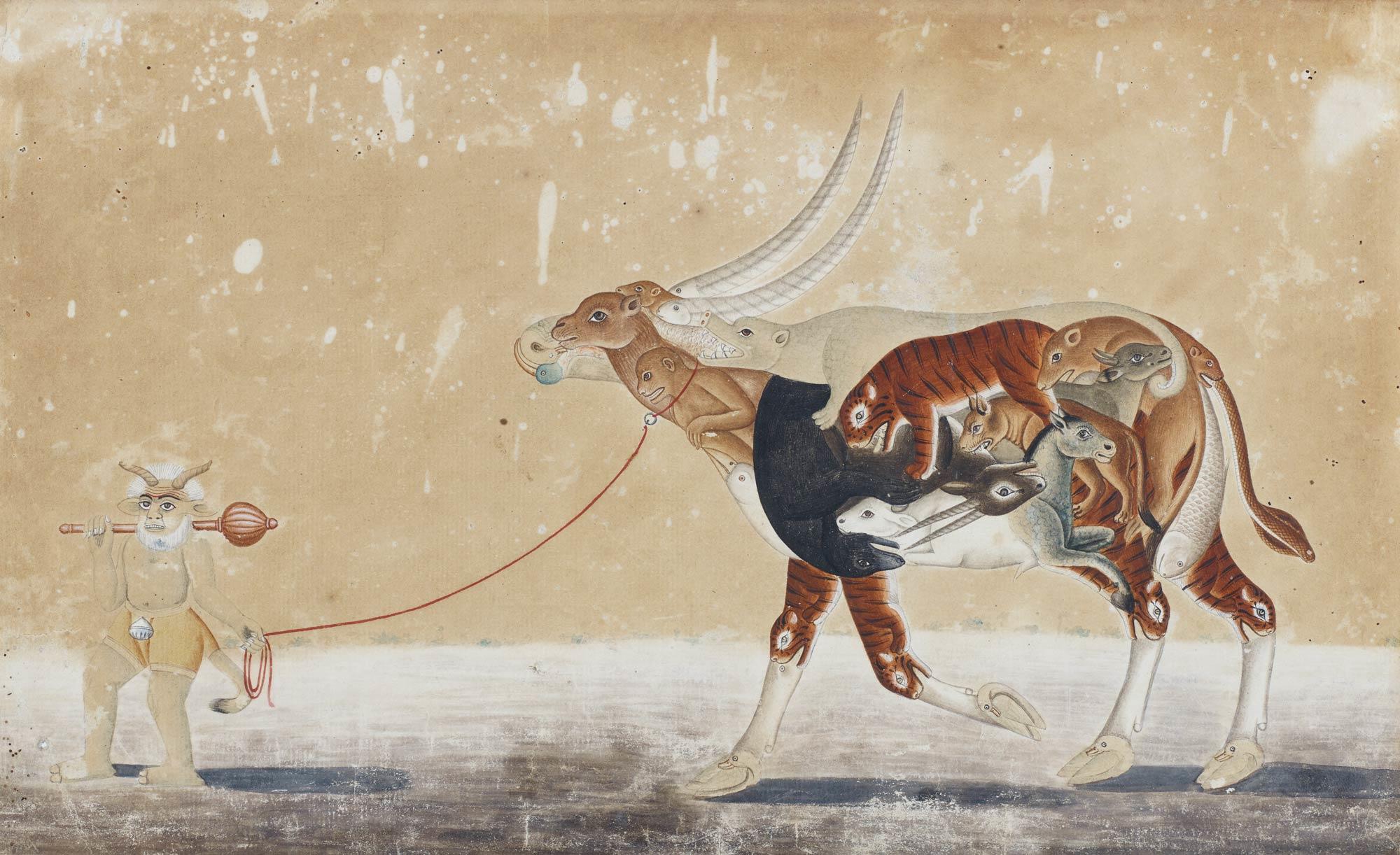Click on the image to zoom
A Composite Ox with a Demon Groom
- Accession Number:AKM462
- Place:Oudh, India
- Dimensions:
- Date:ca. 1810–30
- Materials and Technique:Opaque watercolour on paper
The origins of composite animals may date back to early Buddhist manuscripts of Central Asia. Later, they were introduced into Persian painting and subsequently became infused with the artistic essence of Northern and Central India in the sixteenth century. Such images prominently depict humans, real and whimsical animals, divs (demons) or angels, combined into mosaics of intertwined yet recognized animals such as horses, camels, and oxen. In Hindu tradition, such compositions may have represented the mystical doctrine of the internal unity of all beings. Other interpretations suggest the sovereignty of the heavens over the natural world, mirroring the power of a king over his realm and its people.
Note: This online resource is reviewed and updated on an ongoing basis. We are committed to improving this information and will revise and update knowledge about this object as it becomes available.


